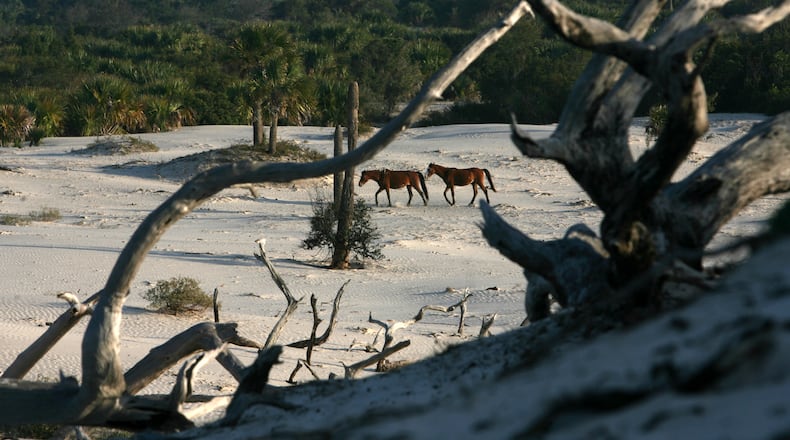Descendants of Cumberland Island's wealthy owners propose building as many as 10 homes on an 88-acre swath of the national seashore park, riling environmentalists who want the island to revert to its original, pristine state.
Here are 5 things to know about Cumberland:
It is the largest and southernmost of Georgia’s barrier islands. It became a protected National Seashore in 1972 and features a 9,800-acre wilderness area. Wildlife that can be found on the island include great blue herons, wild turkeys, peregrine falcons, armadillos, feral hogs and about 175 feral horses that are descendants of domesticated horses that were abandoned in 1949.
The island is accessible only by ferry or private boat, and no more than 300 visitors are permitted on the island at any one time.
In the 1730s, James Oglethorpe laid out two forts, one on each end of the 18-mile-long island. Aspiring planters then came to the island in the 1750s, once slavery was allowed there.
In the early 1880s, Thomas Morrison Carnegie, a brother of industrialist Andrew Carnegie, came to the island with his wife, Lucy Coleman Carnegie. At one time, the Carnegies owned about 90 percent of the island. A favorite stop for Cumberland sightseers is the Dungeness Ruins, the remains of the 59-room Queen Anne-style mansion that Thomas and Lucy Carnegie built in 1885. The home was vacated in 1925 and burned in 1959. The Carnegies in 1901 also built what is now the exclusive Greyfield Inn. First, the private home of one of the Carnegies’ daughters, it became an inn in 1962.
In 1996, John F. Kennedy Jr. married Carolyn Bessette on the island in the tiny First African Baptist Church. The “Kennedy church,” as it is often called now, is located in Settlement, once the home to the African-American employees of the Carnegie family.
Learn more about Cumberland here.
About the Author


